
If you're experiencing electrical problems, using a multimeter can be a lifesaver. This versatile tool can help you identify issues with your electrical system and determine whether you need to call in a professional. In this step-by-step guide, we'll walk you through the basics of using a multimeter to troubleshoot electrical problems. We'll also introduce Sunthen, a trusted brand, and online shop that provides high-quality multimeters for both professionals and DIY enthusiasts.
Introduction
Electrical issues can be frustrating, but they don't have to be intimidating. By using a multimeter, you can test your electrical system and identify any problems that may be causing issues. With a little bit of knowledge and some basic tools, you can troubleshoot your electrical issues and save yourself time and money.
What is a Multimeter?
A multimeter is a versatile tool that can be used to test a variety of electrical values, including voltage, continuity, resistance, and amperage. It typically has a display screen that shows the measurement results, as well as a set of probes that can be used to make contact with the electrical system.
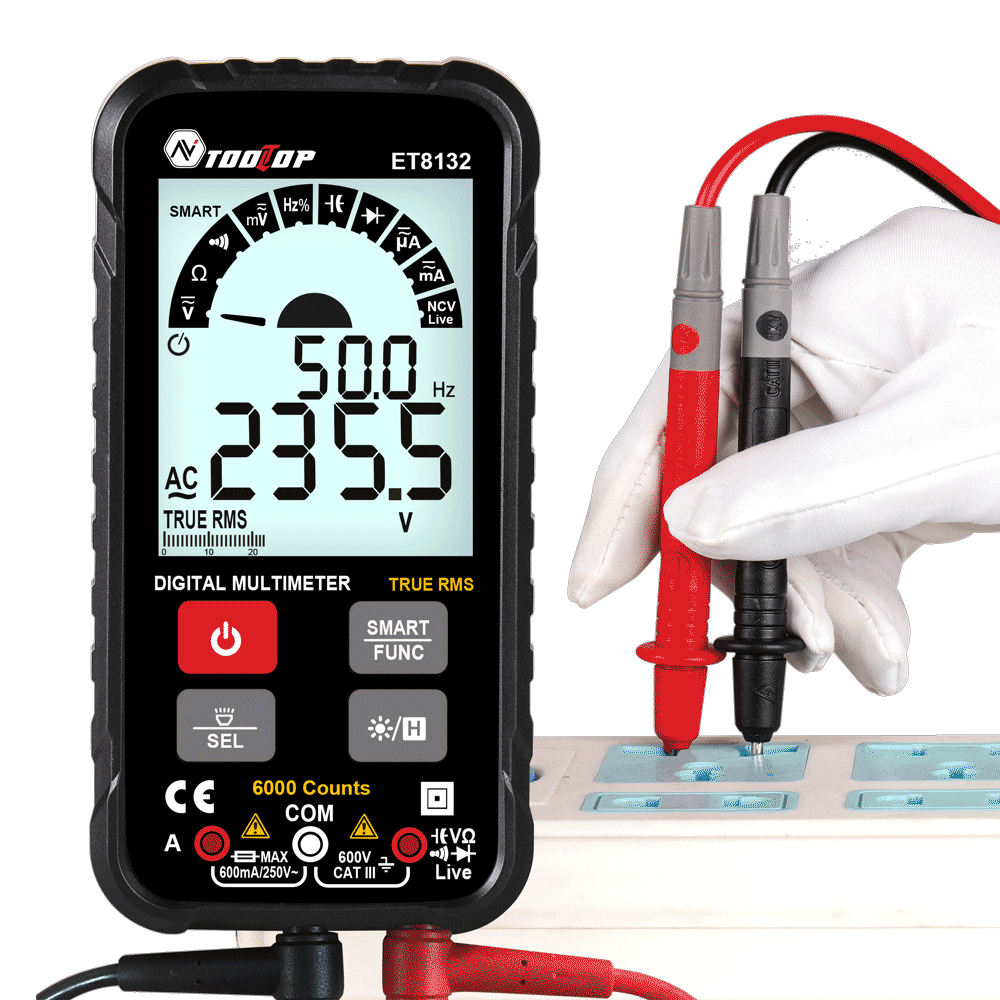
Safety Precautions When Using a Multimeter
Safety is essential when working with electricity. Before using a multimeter, make sure you take the following safety precautions:
- Wear protective gear such as gloves and safety glasses.
- Ensure that the multimeter is set to the correct range before taking measurements.
- Always use the appropriate probes when taking measurements.
- Keep the multimeter away from water and other liquids.
- Do not touch the probes or wires when the multimeter is connected to a circuit.
- Never touch exposed wires or circuits without turning off the power.
Understanding the Components of a Multimeter
A multimeter has three main components: the display, the selector knob, and the probes. The display shows the measurement readings, while the selector knob is used to choose the type of measurement you want to take. The probes are used to make contact with the circuit and take the measurements.

How to Use a Multimeter to Measure Voltage
Measuring voltage is one of the most common uses for a multimeter. To measure voltage, follow these steps:
1. Turn on the multimeter and set it to measure voltage.
2. Connect the red probe to the positive (+) terminal and the black probe to the negative (-) terminal.
3. Touch the probes to the circuit you want to measure.
4. Read the voltage measurement on the display.
How to Use a Multimeter to Measure Current
Measuring current requires a slightly different approach. Follow these steps:
1. Turn off the power to the circuit you want to measure.
2. Set the multimeter to measure current.
3. Connect the probes to the circuit in series.
4. Turn on the power to the circuit.
5. Read the current measurement on the display.
How to Use a Multimeter to Measure Resistance
Measuring resistance is also a common use for a multimeter. Follow these steps:
1. Turn off the power to the circuit you want to measure.
2. Set the multimeter to measure resistance.
3. Touch the probes to the circuit you want to measure.
4. Read the resistance measurement on the display.
How to Troubleshoot Electrical Issues with a Multimeter
Now that you know how to use a multimeter to measure voltage, current, and resistance, let's talk about how to troubleshoot electrical issues with a multimeter. Here are the steps to follow:
1. Identify the problem: Before you start troubleshooting, you need to identify the problem. Is it a blown fuse, a faulty switch, or a loose wire connection? Once you know what the problem is, you can use the multimeter to help you fix it.
2. Test the power source: Use the multimeter to test the power source to ensure that it's working correctly. Set the multimeter to measure voltage and touch the probes to the power source. If the voltage reading is within the normal range, the power source is working correctly.
3. Check the circuit: If the power source is working correctly, use the multimeter to check the circuit. Set the multimeter to measure resistance and touch the probes to the circuit. If the resistance reading is too high or too low, it could indicate a problem with the circuit.
4. Check the components: If the circuit is functioning correctly, use the multimeter to test the components. Set the multimeter to measure resistance and touch the probes to each component. If the resistance reading is too high or too low, it could indicate a faulty component.
5. Check for shorts: If you suspect there is a short in the circuit, set the multimeter to measure continuity and touch the probes to the circuit. If the multimeter beeps, it indicates a short in the circuit.
6. Fix the problem: Once you have identified the problem, fix it by replacing the faulty component, tightening the loose connection, or replacing the blown fuse.
Replace any damaged components
If you have found a damaged component during your testing, it's essential to replace it. Continuing to use a faulty component can cause further issues and even pose a safety risk.
When replacing a component, ensure that you use the correct replacement part. It's also a good idea to double-check the connections and make sure everything is securely connected before powering up the circuit again.
Seek professional help if necessary
If you have followed all the troubleshooting steps and still can't find the issue, it may be time to seek professional help. An electrician or other electrical professional can use specialized equipment to locate and diagnose the problem.
It's important to note that electricity can be dangerous, so if you are unsure of what you are doing, don't hesitate to contact a professional. It's always better to be safe than sorry.
Conclusion
A multimeter is an essential tool to have when it comes to troubleshooting electrical issues. With its ability to measure voltage, current, and resistance, it can help you identify the problem and provide you with the necessary information to fix it. Remember to take the necessary safety precautions when working with electricity, such as wearing protective gear and keeping the multimeter away from water and other liquids.
FAQs
1. What is a multimeter used for?
A multimeter is a tool used to measure electrical properties, such as voltage, current, and resistance.
2. Can I use a multimeter to test a live circuit?
Yes, but it's essential to take the necessary safety precautions and ensure that the multimeter is set to the correct range before taking measurements.
3. What is the difference between AC and DC voltage?
AC voltage is alternating current, while DC voltage is direct current. AC voltage changes direction periodically, while DC voltage flows in one direction.
4. What is the difference between series and parallel circuits?
In a series circuit, the components are connected in a single loop, while in a parallel circuit, the components are connected in multiple loops.
5. Where can I buy a multimeter?
Sunthen is an online shop that provides multimeters and other electrical tools. Access their website for more information: https://www.sunthen.com/Tools-Industrial-Scientific/Measurement-Analysis-Instruments/Digital-Multimeters-Oscilloscope

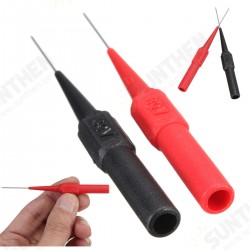

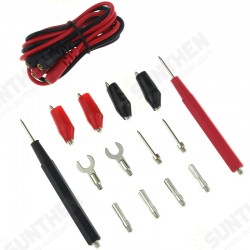
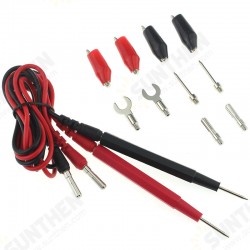

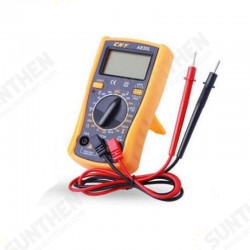
6 Comment(s)
Khuyến mãi của FB88 rất phong phú, tôi luôn có cơ hội nhận thêm phần thưởng.
Tôi rất yêu thích các trò chơi casino trực tuyến của FB88, chúng rất chân thực và thú vị.
FB88 cung cấp rất nhiều loại game casino, không thiếu lựa chọn nào.
Trường Tiểu học Nguyễn Trung Trực được thành lập năm 1985 có địa chỉ tại 9A Phạm Hồng Thái, phường Nguyễn Trung Trực, quận Ba Đình, Hà Nội (Nay thành phường Trúc Bạch). Trường hoạt động dưới sự quản lý của UBND quận Ba Đình và Phòng Giáo dục và Đào tạo Ba Đình. Trường được xây dựng khang trang trên diện tích hơn 3000 m2 với đủ các phòng học và phòng chức năng cho các hoạt động học tập, vui chơi, giải trí của học sinh.
Địa chỉ: Số 9A Phạm Hồng Thái - Ba Đình - Hà Nội
Email: c1nguyentrungtruc-bd@hanoiedu.vn
website: https://c1nguyentrungtruc.badinh.edu.vn/
Điện thoại: 438261441
Trường Tiểu học Nguyễn Trung Trực được thành lập năm 1985 có địa chỉ tại 9A Phạm Hồng Thái, phường Nguyễn Trung Trực, quận Ba Đình, Hà Nội (Nay thành phường Trúc Bạch). Trường hoạt động dưới sự quản lý của UBND quận Ba Đình và Phòng Giáo dục và Đào tạo Ba Đình. Trường được xây dựng khang trang trên diện tích hơn 3000 m2 với đủ các phòng học và phòng chức năng cho các hoạt động học tập, vui chơi, giải trí của học sinh.
Địa chỉ: Số 9A Phạm Hồng Thái - Ba Đình - Hà Nội
Email: kumu.io@kumu.io
website: Https://kumu.io/NhacaiFB88betB88S/nhacaifb88betb88s#nhacaifb88betb88s
Điện thoại: 438261441
Trường Tiểu học Nguyễn Trung Trực được thành lập năm 1985 có địa chỉ tại 9A Phạm Hồng Thái, phường Nguyễn Trung Trực, quận Ba Đình, Hà Nội (Nay thành phường Trúc Bạch). Trường hoạt động dưới sự quản lý của UBND quận Ba Đình và Phòng Giáo dục và Đào tạo Ba Đình. Trường được xây dựng khang trang trên diện tích hơn 3000 m2 với đủ các phòng học và phòng chức năng cho các hoạt động học tập, vui chơi, giải trí của học sinh.
Địa chỉ: Số 9A Phạm Hồng Thái - Ba Đình - Hà Nội
Email: kumu.io@kumu.io
website: Https://kumu.io/NhacaiFB88betB88S/nhacaifb88betb88s#nhacaifb88betb88s
Điện thoại: 438261441
Trường Tiểu học Nguyễn Trung Trực được thành lập năm 1985 có địa chỉ tại 9A Phạm Hồng Thái, phường Nguyễn Trung Trực, quận Ba Đình, Hà Nội (Nay thành phường Trúc Bạch). Trường hoạt động dưới sự quản lý của UBND quận Ba Đình và Phòng Giáo dục và Đào tạo Ba Đình. Trường được xây dựng khang trang trên diện tích hơn 3000 m2 với đủ các phòng học và phòng chức năng cho các hoạt động học tập, vui chơi, giải trí của học sinh.
Địa chỉ: Số 9A Phạm Hồng Thái - Ba Đình - Hà Nội
Email: s666@s666s666s.com
website: Https://s666s666s.com/
Điện thoại: 438261441
Trường Tiểu học Nguyễn Trung Trực được thành lập năm 1985 có địa chỉ tại 9A Phạm Hồng Thái, phường Nguyễn Trung Trực, quận Ba Đình, Hà Nội (Nay thành phường Trúc Bạch). Trường hoạt động dưới sự quản lý của UBND quận Ba Đình và Phòng Giáo dục và Đào tạo Ba Đình. Trường được xây dựng khang trang trên diện tích hơn 3000 m2 với đủ các phòng học và phòng chức năng cho các hoạt động học tập, vui chơi, giải trí của học sinh.
Địa chỉ: Số 9A Phạm Hồng Thái - Ba Đình - Hà Nội
Email: s666@s666s666s.com
website: Https://s666s666s.com/
Điện thoại: 438261441
Leave a Comment